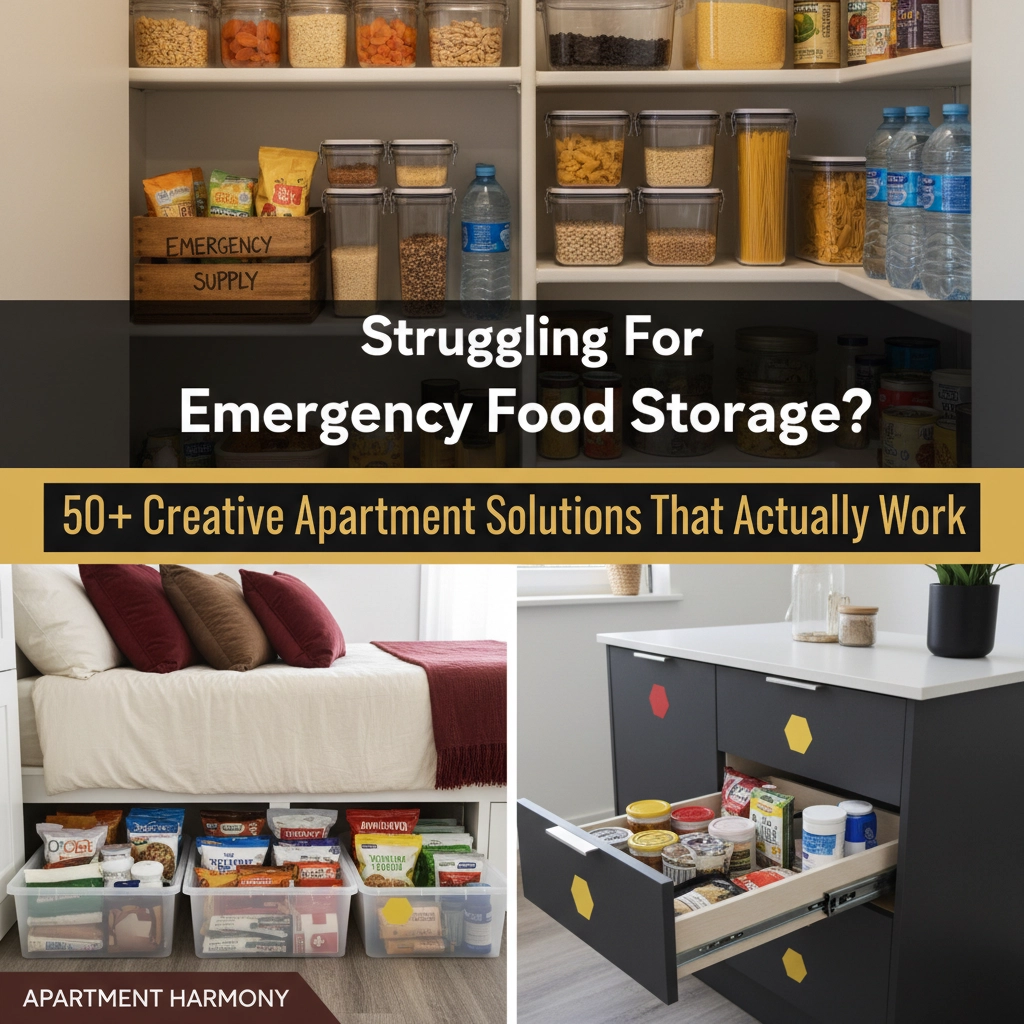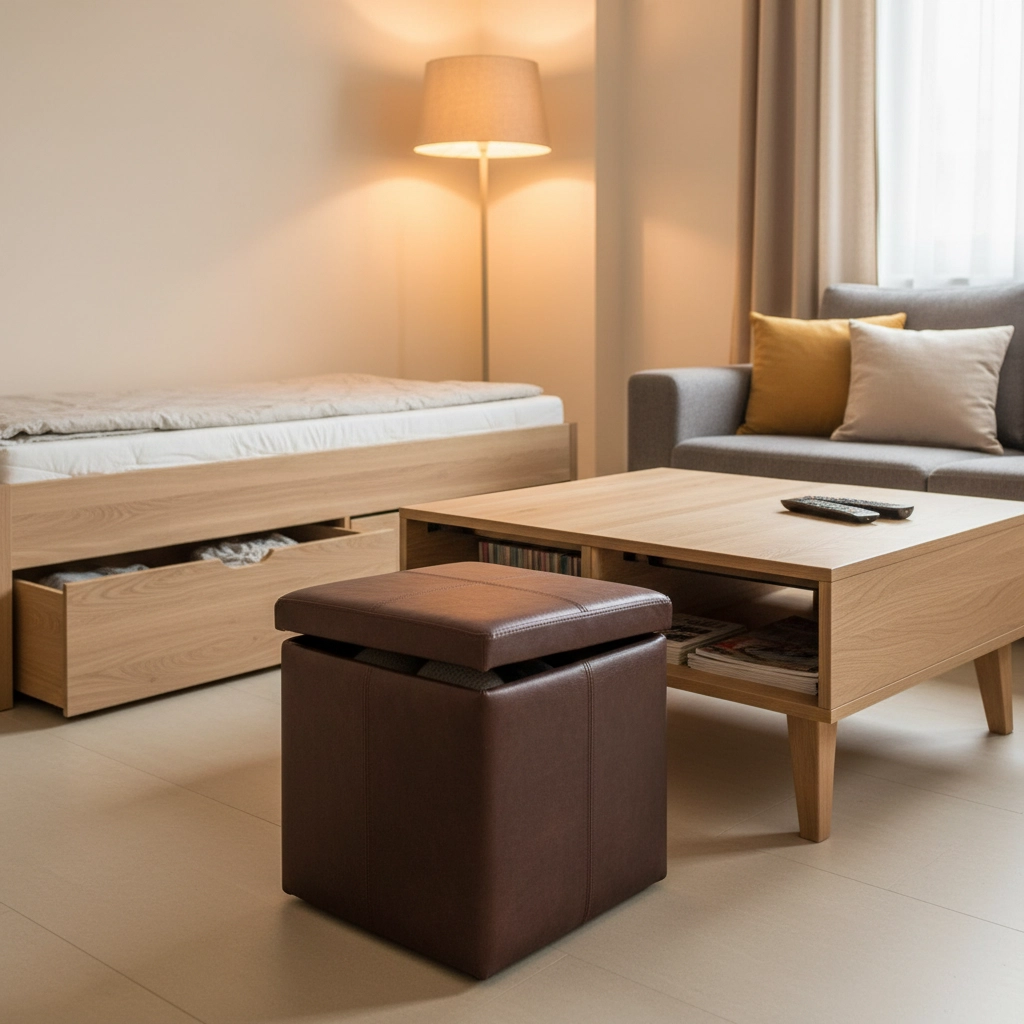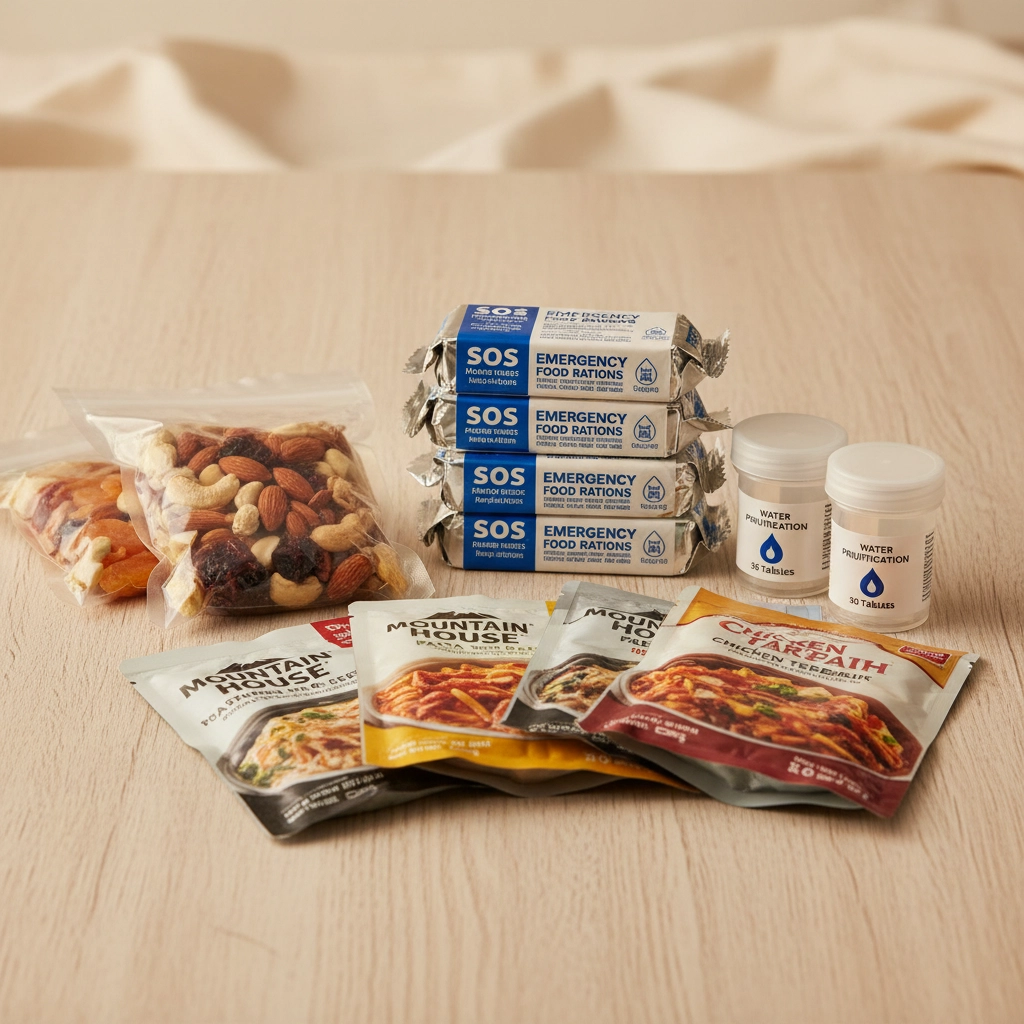
Living in an apartment or small house doesn’t mean you have to sacrifice emergency preparedness. Storage? I know the struggle – you’re looking at your tiny kitchen, your single closet, and wondering how on earth you’re supposed to store months of food when you barely have room for your winter coats. The good news? With some creativity and smart planning, even the tiniest space can become a well-stocked emergency pantry.
Let’s dive into solutions that actually work for real small-space living.
Smart Container Choices That Maximize Space
#10 Cans: Your New Best Friend
Some preppers won’t tell you, but – #10 cans are apartment gold. They stack like building blocks, fit perfectly in most cabinets, and one standard coat closet can hold 3-6 months of food for one person. The real genius? The freeze-dried foods inside aren’t just for emergencies. Toss those strawberries into your morning oatmeal or add freeze-dried beef to your Tuesday night pasta.
Space-Saving Container Solutions:
- Collapsible water containers that fold flat when not in use
- Vacuum-sealed bags for rice, pasta, and dried goods
- Stackable rectangular containers (ditch the round ones)
- Slim-profile storage boxes that slide under furniture
- Airtight containers that nest inside each other
- Mason jars for visibility and easy rotation
- Food-grade buckets with gamma seal lids
- Mylar bags inside boxes for double protection

Creative Space Utilization
Under-Bed Storage Revolution
Your bed is sitting on prime real estate. Install bed risers to double your storage space, or invest in a bed frame with built-in drawers. Low-profile storage containers slide perfectly under most beds and can hold weeks of emergency supplies.
Closet Transformation Techniques:
9. Convert your coat closet into a food pantry with floor-to-ceiling shelves
10. Use closet door backs for over-the-door organizers
11. Install narrow shelving units between hanging clothes
12. Store #10 cans on the closet floor in neat stacks
13. Hang mesh bags from closet rods for lightweight items
14. Create a curtain divider to section off part of a bedroom closet
Kitchen Cabinet Optimization:
15. Install pull-out drawers in deep cabinets
16. Use cabinet door interiors for spice racks and small items
17. Add shelf risers to double your cabinet storage
18. Store everyday ingredients in #10 can format
19. Use lazy Susans in corner cabinets
20. Install under-cabinet hanging baskets
Multi-Purpose Furniture Solutions
Why have furniture that just sits there when it could be working double duty?
Functional Storage Furniture:
21. Ottoman storage cubes for seating and supply storage
22. Coffee tables with hidden compartments
23. End tables made from cases of #10 cans with tablecloths
24. Bed frames with built-in storage drawers
25. Dining benches with lift-up seats
26. Bookshelf room dividers filled with supplies
27. Storage headboards with hidden compartments

Vertical and Elevated Storage
When you can’t go out, go up.
Wall and Ceiling Solutions:
28. Heavy-duty shelving systems rated for food weight
29. Wall-mounted spice racks for small canned goods
30. Overhead storage above doorways (adults can reach, kids can’t)
31. Ceiling-mounted pulley systems for seasonal rotation
32. Magnetic strips on appliance sides for metal containers
33. Pegboard systems with removable containers
Between-Space Storage:
34. Narrow shelving between appliances and walls
35. Slim rolling carts that fit in tight spaces
36. Storage in the gap between washer and dryer
37. Under-stair storage with custom shelving
38. Behind-door storage in unused corners
Organization Systems That Actually Work
Storage without organization is just expensive clutter.
Rotation and Inventory Solutions:
39. Meal-based organization – box all ingredients for favorite meals together
40. Color-coded labels by expiration date
41. First-in-first-out can rotation systems
42. Digital inventory apps on your phone
43. Clear containers for easy visual inventory
44. Zone organization by meal type (breakfast, lunch, dinner)
45. Emergency grab-and-go boxes pre-packed

Strategic Purchasing Approaches
Monthly Building Plan:
46. Month 1: Focus on 72-hour kit basics
47. Month 2: Add 3-4 #10 cans of foods you actually eat
48. Month 3: Install organizational systems and add water storage
49. Month 4: Expand protein sources and cooking alternatives
50. Month 5: Add comfort foods and variety items
Budget-Friendly Strategies:
51. Build storage with just $5 per week consistently
52. Buy generic brands for basic staples
53. Shop manager’s specials and stock up
54. Join warehouse clubs with neighbors to split bulk purchases
55. Use cashback apps specifically for emergency supplies
Community and Cooperative Solutions
Shared Resources:
56. Coordinate with neighbors for bulk buying power
57. Share storage space with trusted neighbors
58. Create building-wide emergency supply exchanges
59. Organize community garden participation for fresh foods
60. Establish neighborhood skill-sharing for food preservation
Quick-Start Emergency Options
Space-Efficient Emergency Foods:
61. SOS emergency food bars (2400 calories in one small bar)
62. Water purification tablets (treats 25 quarts, fits in your pocket)
63. Freeze-dried meal pouches that store flat
64. Energy-dense nuts and dried fruits in vacuum bags
65. Powdered milk and protein supplements

Advanced Apartment Strategies
Temperature and Environment Control:
66. Use closets’ consistent temperatures for long-term storage
67. Avoid storage near heating vents or sunny windows
68. Rotate supplies from warmer to cooler spots seasonally
69. Use moisture absorbers in humid climates
70. Monitor temperature with small wireless sensors
Security and Discretion:
71. Keep supplies in non-obvious containers
72. Distribute storage across multiple locations in your apartment
73. Use furniture covers to hide storage containers
74. Store most valuable supplies in least obvious places
75. Keep a small emergency cache at work or in your car
Making It All Work Together
The secret to apartment/small home emergency storage isn’t having more space – it’s using every inch of space you have more strategically. Start with one area, like your coat closet or under-bed space, and build from there. Incorporate stored foods into your regular cooking rotation so nothing goes to waste and your investment pays off daily.
Remember, even a well-stocked small apartment beats an under-prepared large house any day. Your neighbors with huge pantries might have more room, but you’ll have the satisfaction of knowing you’ve maximized every square foot of your space.
The key is consistency and creativity. Pick five solutions from this list that work for your specific space and lifestyle, then implement them one at a time. Before you know it, you’ll have months of emergency supplies tucked away so cleverly that even you might forget where you put everything.
Ready to transform your small home into a preparedness powerhouse? Start small, think vertical, and remember – every prepper began with their first can of food stored away. Check out my latest podcast episode for more tips, and don’t forget to sign up for my newsletter for weekly underreported news and strategies that actually work in real life.


